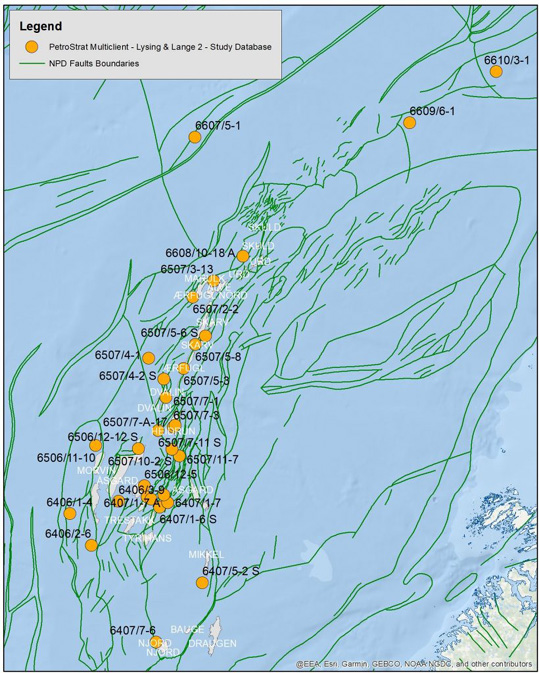Distribution, Provenance & Reservoir Quality of Mid-Cretaceous Lysing & Intra-Lange Sands, Across the Halten & Dønna Terraces
This new reservoir geology study, of the Lysing and Intra-Lange Formation sands across the Halten & Donna terraces of Mid-Norway, will explore the potential relationships between age, structural development, depositional setting, sediment input, sediment composition and diagenesis as controls upon reservoir quality.
These mid to late Cretaceous deepwater sands are relatively under-studied as compared with the established Jurassic plays of mid-Norway, having generally been considered, to date, as a secondary exploration target. Geoscientists seeking to predict sand distribution and character within this Albian to Coniacian section have been challenged by their relatively sporadic distribution. This partly reflects the available accommodation space created through opening of the North Atlantic, and this outer shelf to upper bathyal setting having been largely dominated by pelagic muds, unless interrupted by turbidites and shelfal fans deposited in proximal to emergent areas.

Database map for the 31 study wells in this Lysing-Lange reservoir geology study, set against structural elements and fields polygons accessed via the NPD
Our 31 study wells were selected to capture end-member examples across a range of criteria, to ensure the database will be representative of our entire study area. This includes geographic spread to capture multiple sediment input points and a range of present burial depths to observe the impact on poroperm with compaction. The selected wells capture variation in sub-cropping stratigraphy, that may have been recycled into our defined Breiflabb Member, Smorflyndre Member or Lysing Formation sands, those with core and those associated with intra-Cretaceous discoveries. It is hoped this study will lend regional geological context to recent discoveries such as Warka, Egyptian Vulture and Dvalin North, and fields such as Aerfugl and Marulk.
All available evidence of variability in sediment composition and recycling, that may represent derivation from a variety of hinterland source areas will be collated. These provenance indicators include (1) the age of reworked palynological markers (alongside interpreting the in-situ micropalaeontological and palynological assemblages), (2) regional heavy-mineral datasets collated by renowned discipline-expert Prof. Andy Morton and matched to source areas in Greenland and Norway, (3) sand composition characterised by Quartz-Feldspar-Lithic (QFL) plots from petrographic/XRD analysis (4) lithotyping using QEMSCAN® (SEM-EDS) mineralogical analyses (supported by Rocktype Ltd) of allochthonous material. A Phase 1 biostratigraphic study of the Lysing and Intra-Lange sands, by PetroStrat in 2006, recognised a variety of Palaeozoic, Jurassic and intra-Cretaceous palynological taxa reworked into this interval.
These provenance datasets will be calibrated against depositional and diagenetic evidence recorded from (1) new core descriptions, (2) palaeoenvironments determined from biostratigraphic assemblages (i.e., microfacies and palynofacies), and (3) reservoir quality assessments from the petrographic and QEMSCAN® (SEM-EDS) analysis of core and cuttings samples – targeting intervals with provenance/composition variations previously detected from vintage biostratigraphic data. SEM imagery will then be acquired to observe pore throats, pores and authigenic mineralogy filling pores, while XRD analysis will help us identify key clay types and their crystallinity present. Our existing reservoir quality multiclient reports on the Lysing and Intra-Lange sands suggest that we may expect a dominant facies control upon porosity & permeability, but the study will aim to observe how this may vary in response to sediment recycling, from various short or long-transport sources, including the influence of ‘contourite’ bottom-currents on the gravity flows during and after deposition.
All new interpretations of sand presence, input points, inferred geobody geometries, fairway orientation, net to gross and diagenetic reservoir character will be illustrated within a high resolution biostratigraphic framework of 15 or more timeslices. Our datasets will be placed into a broader structural context thanks to integration with selected long 2D seismic lines, working with Parker Barnwell Consulting.
KeyFacts Energy Industry Directory: PetroStrat
 KEYFACT Energy
KEYFACT Energy